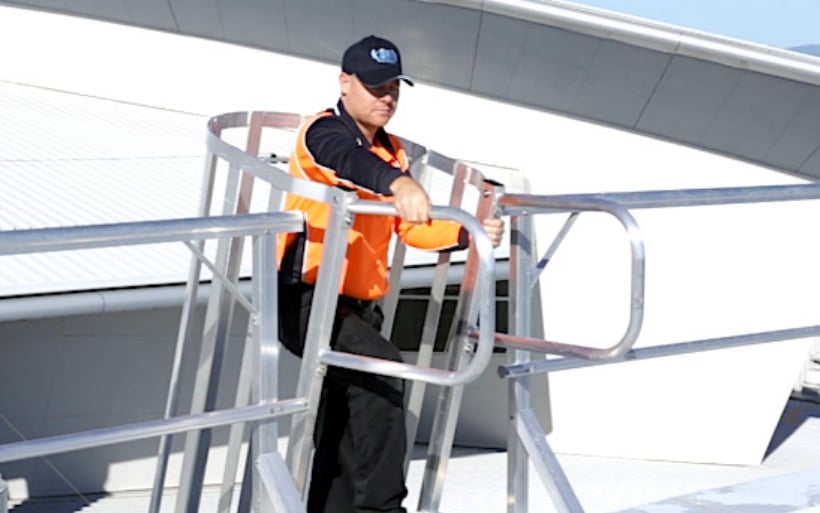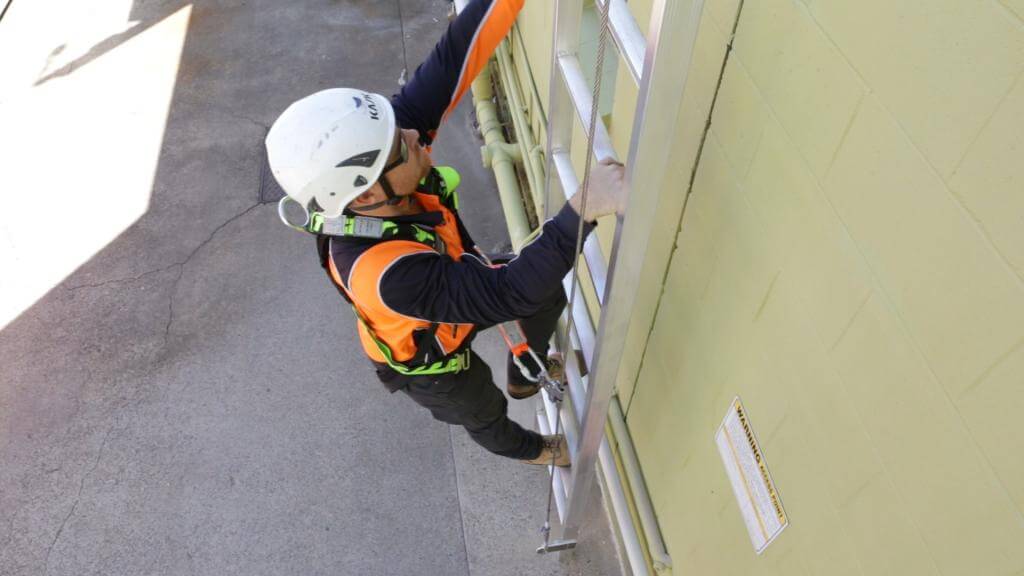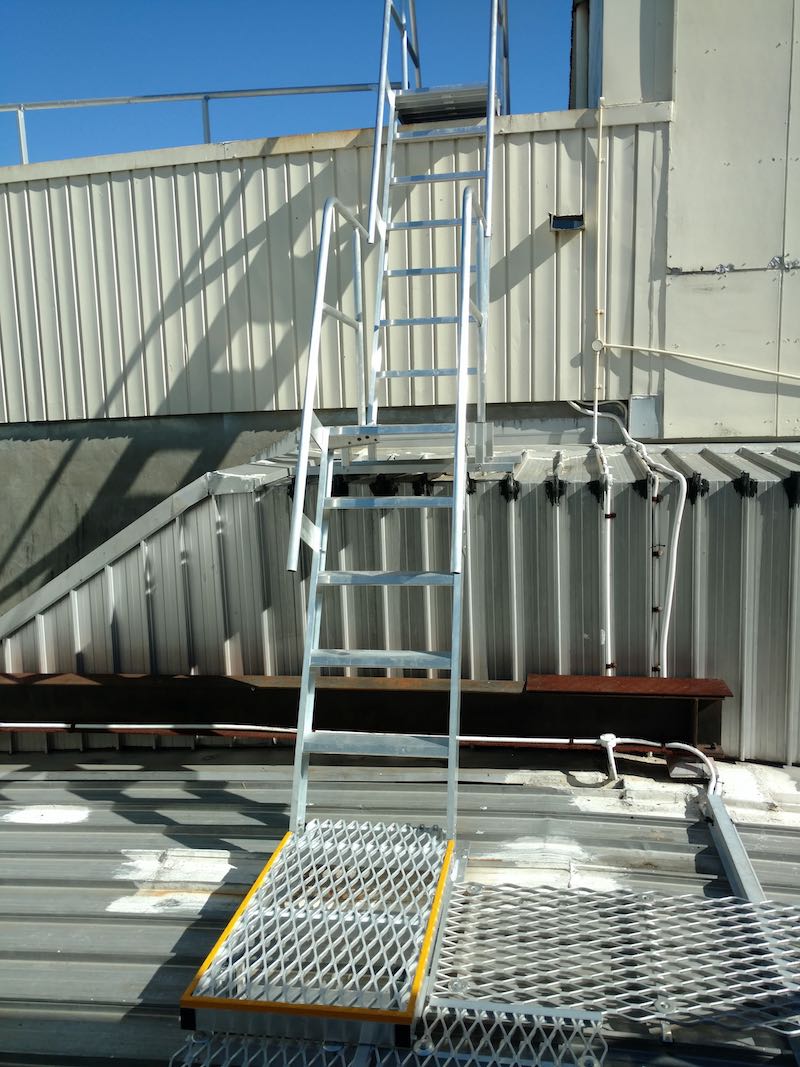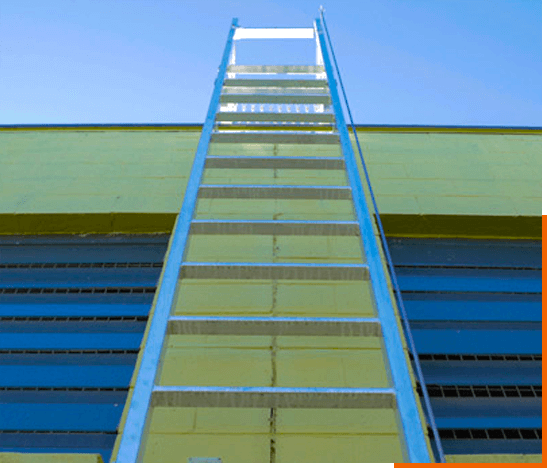
We provide custom roof access solutions for your site, which increase safety, efficiency, and visual appearance.
We provide custom roof access solutions for your site, which increase safety, efficiency, and visual appearance.
Safe at Heights custom designs, fabricates and installs all types of roof access ladder in Brisbane and throughout South East Queensland. We predominately manufacture aluminium roof ladders, however we can provide steel and stainless steel options as well. All access ladders must comply with AS1657:2018 and be considered fit for purpose. Our dedicated team can design a roof access system that will perfectly suit your requirements.
To learn more about the different types of roof access ladder solutions we can provide, please scroll down and click on any of our range or you can contact us anytime by choosing from the options below.
The first step in deciding on what type of access system you need will start with three questions:
These answers will help decide what roof access ladder system will be most appropriate, compliant and safe.
Safe at Heights proudly manufactures our own roof access ladders and stairs, all designed in compliance with Australian Standards, Legislation and Codes of Practice. It is a legal requirement to provide a safe and compliant roof access ladder when there is a need to access a roof to conduct any type of maintenance or inspection works. AS1657:2018 and the Managing the Risk of Falls at Workplaces Code of Practice, provide clear guidelines on what types of methods can be used with a hierarchy showing the preferred methods in order of preference.
The hierarchy order of roof access is set out in Section 2 of the Standard AS1657:2018 – Means of Access, and is as follows:
Within this there is also a range of designs and types depending upon the location, environment, height and angle. For example, stairs can be installed at an angle of between 20° and 45° but with the preferred angle being between 30° and 38°. Likewise angled roof ladders can be between 70° and 90° with the preferred angle being between 70° and 75°.
While this seems quite straight forward, there is a substantial amount of additional information within the Standard and also the Code of Practice that must be taken into consideration. At Safe at Heights, we often see vertical caged ladders at workplaces which technically comply with AS1657:2018, and so at face value OHS staff at that workplace believe they have provided a safe means of entry. However if you read further into the Standard and in particular Section 7.2 of the Code of Practice, it clearly states that a vertical caged ladder is considered high risk and must only be installed if there is no other alternative.
It goes on further to state that if a vertical ladder must be installed it should have either a permanent or temporary type of fall arrest system installed to control the risk of a fall. Installing or implementing a fall arrest system to a ladder, then triggers the requirement for specific training for the users of the system as well as the requirement for a trained and proven rescue plan to be implemented. This adds to the risks involved with using this type of roof ladder and is why we recommend that where possible angled or step type ladders should be considered over the installation of a vertical ladder.
Another common mistake we at Safe at Heights see is where a vertical caged ladder has been installed and the workplace becomes aware of the high fall risk, they immediately install a vertical fall arrest cable system or implement workers to use a harness with twin tailed lanyards. What they fail to realise is that it has been shown to be almost impossible to rescue a fallen unconscious worker who is suspended within the confines of a ladder cage. The Work Health and Safety Regulation clearly states that where a fall arrest system has been installed to control the risk of a fall, that a tried and proven rescue plan is implemented and workers trained in this method. Therefore as it is not possible to conduct a rescue within a cage, the workplace is immediately in breach of the Regulation.
When it comes to designing and installing a safe means of roof access, it can start to seem very complicated and a bit overwhelming. However once you are aware of the requirements and follow the hierarchy of control it is actually quite simple. To help you with this, Safe at Heights has an experienced and dedicated team ready to assist you. Why not call us today to find out more



There are different types of access systems. Each roof access ladder has its own advantages and disadvantages. It is important to understand that there is a hierarchy that you must be aware of when it comes to assessing which type is best for your situation. The Work Health and Safety Act requires that you take this into consideration when designing the access. Below is a description of each type of roof ladder system. We have put them in order of safety and where they appear on the hierarchy. But don’t get too concerned about trying to work out what will be the best solution for you, as we are always here to help. One of our experienced Height Safety Specialists is ready to assist at any time.

The most common roof access ladder you will see on most buildings is the angled ladder. It is between 70° and 75°. These roof ladders can come in a number of different shapes and sizes. Once the ladder exceeds 3m in height we recommend that a ladder cage is installed. This provides the user with greater protection against a fall. It also gives the user a greater feeling of security as the cage encloses them and stops them from feeling exposed to a fall. This is particularly important as the height of the ladder increases. When stepping off the ladder at the top of the roof, we also recommend that 2m of guard railing is installed either along the edge of the roof or facing directly into the roof either side of the ladder top platform.
All roof ladders must comply with AS1657 and be considered fit for purpose. As with all ladders, you must always maintain three points of contact when climbing an angled rung ladder. This means that the user is not able to carry anything in their hands. To learn more about angled ladders please click on the learn more button below.
Step type ladders are a great access solution that are between a standard angled ladder and stairs. A step type ladder has a 100mm rung tread depth, an angle between 60° and 70° (65° being the preferred angle) and has a hand rail either side for additional support. They are easy to climb and have a low residual fall risk due to their angle, deep treads and hand railing.
The maximum height that this type of access can bridge is 6m before a change of direction platform is required. Any vertical height over 3m we recommend that a cage be fitted with 2m of guard railing either side of the upper of the upper entry point to prevent sideways falls.
As with all ladders, users must maintain three points of contact at all times and face the ladder as they climb it. It is common to see workers climbing down step type ladders facing forwards like they would if they were stairs. This is quite dangerous and should never be allowed. AS1657 states that steps must be taken to ensure that all workers face the ladder when climbing.
To learn more about our custom made step type ladders please click on the Learn More button below


A vertical ladder is considered the most high risk type of roof access and should only be used when no other access system can be installed. The Managing the Risk of Falls at Workplaces Code of Practice states that all vertical roof access ladders must have either a permanent or temporary fall arrest system installed. You must also provide information and training on how to use the ladder safely, including a rescue plan that has been tried and proven to work. It must be noted that many vertical ladders have cages. However it has been proven that it is very difficult if not at times impossible to perform a rescue within the confines of a cage. For this reason we recommend that if no other access system can be installed and a vertical ladder is the only option, that a permanent fall arrest system be installed with no cage. Due to the very high residual risk of this type of access system and the required training and inductions that must be implemented we recommend that you contact us to discuss this option before deciding to proceed, so you can be made fully aware of your responsibilities.
To learn more about our vertical access ladders please click on the Learn More button.
The term cage ladder can refer to any type of ladder that has a cage. This can include angled, step type and vertical. The main reason for having a cage around a ladder is to prevent the person from falling off the side of the ladder. It does not however prevent them from falling directly down. For this reason caged ladders are not considered to provide fall prevention but only fall protection.
For further information on cage ladder please click on the learn more button below.


We are proud to design and manufacture all of our own roof ladders, cages and platforms right here in Brisbane. We use aluminium from a local mill from our own custom made dies. All our designs comply with AS1657 and are custom made to your site. Nothing could be better!
Safe@Heights was started in 2006 in Mansfield and consisted of just one estimator and one installer. Today we have a team of 20 who are made up of office staff, project managers, installers and metal fabricators. All of our staff are full time employees with new members quickly becoming part of our extended family. We proudly support QLD jobs and growth and love to give back to our community. Where possible we source all of our products from within QLD.












